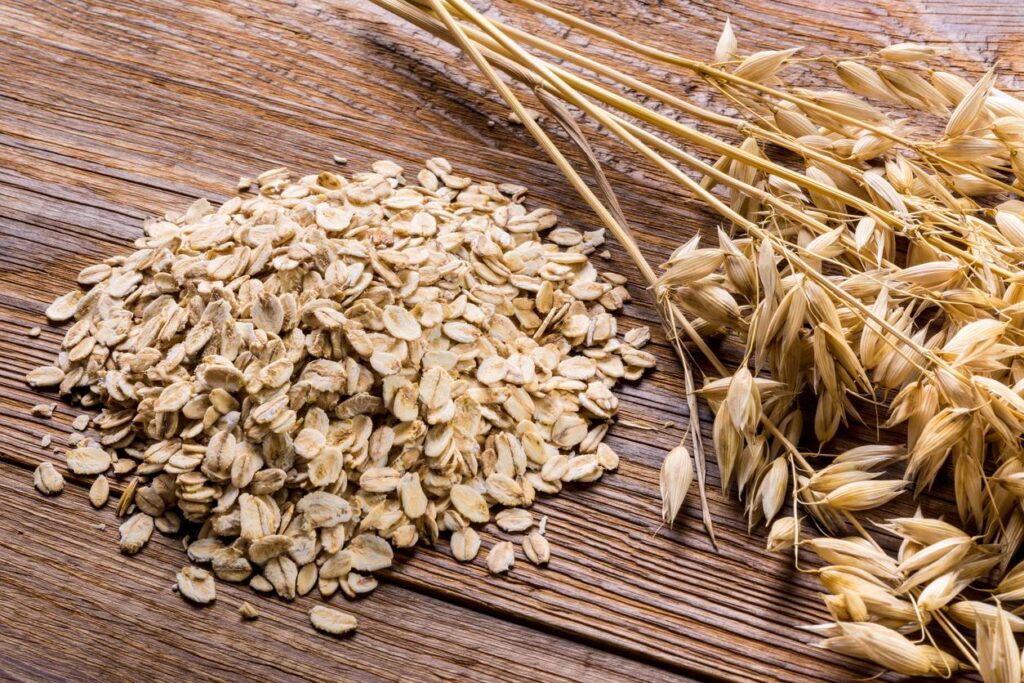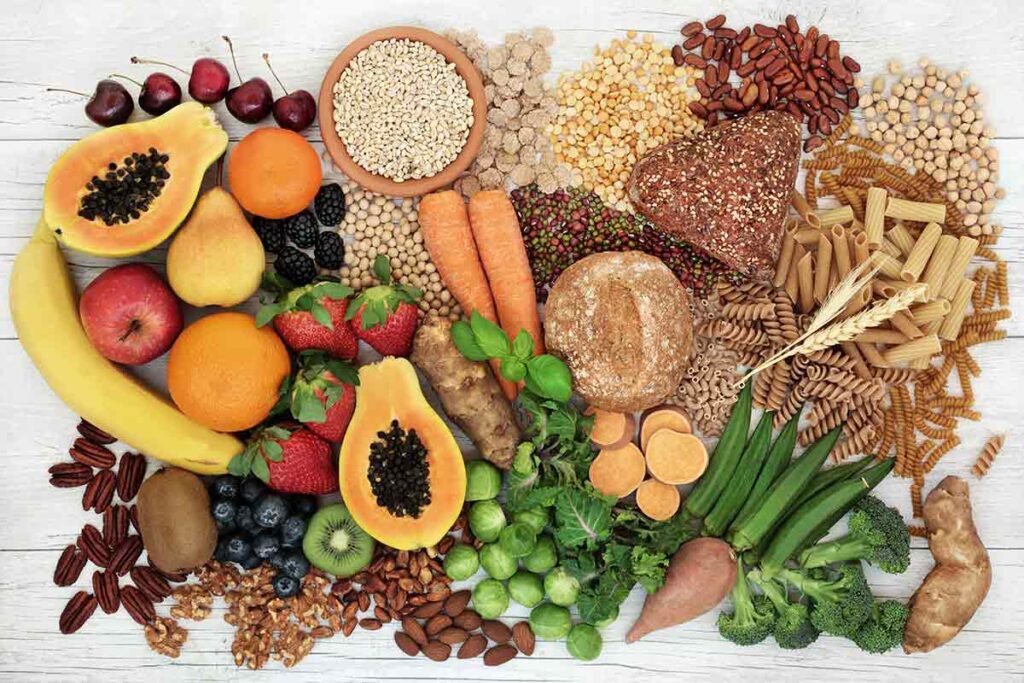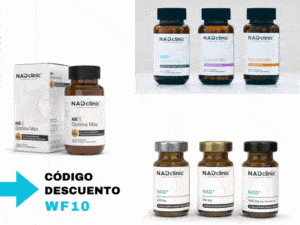Fibre offers your body a host of health benefits (it reduces the risk of chronic disease, speeds up metabolism, reduces inflammation and improves heart and gut health). And unlike protein, you're probably not getting enough fibre-rich foods on a regular basis.
If you want to get started, here are 10 foods rich in soluble fibre that will help you reach your daily ration in no time.
Insoluble vs. soluble fibre: What is the difference?
First things first: understanding the difference between soluble and insoluble fibre is key to optimal gut and digestive health. Basically, there are two types of fibre you should eat regularly: soluble and insoluble fibre. But what's the difference?
Soluble fibre dissolves in water and forms a gel-like substance as it passes through the intestines.
Insoluble fibre, on the other hand, does not dissolve in water and can speed up digestion. Insoluble fibre is basically the coarse fibre from fruits and vegetables that cleans your bowels and bulk up your stools for regular bowel movements.
What are the best foods rich in soluble fibre?
Think oats (oat flakes, flour or bran), fruits such as apples and pears (with skin) and berries, beans and pulses (lentils, black beans, chickpeas), as well as most nuts and seeds.
Which foods contain insoluble fibre?
Think whole wheat and wheat bran, other whole grains such as brown rice and barley, and lots of fibre-rich vegetables, including celery, carrots, courgette, as well as leafy greens such as spinach or lettuce.
What are the benefits of foods rich in soluble fibre?
Today we focus on soluble fibre. In short, soluble fibre absorbs water, swells and creates a gel-like substance during digestion. This keeps intestinal transit active, but it also has another power: keeping the heart healthy. Along with water, the gel structure can also absorb fatty acids, so it has the added benefit of lowering cholesterol.
Soluble fibre is also useful for slowing digestion, which helps regulate blood sugar levels. A steady release of glucose into the blood prevents dips and spikes that cause hunger and alter hormones related to appetite control.
Finally, like all fibre, soluble fibre feeds your gut bacteria, and nowadays we are all looking for a healthy gut.

How much fibre do you need?
Most fibre-rich foods include both soluble and insoluble fibre; some have more of one than the other. Don't stress too much about specific soluble fibre counts, as nutrition labels usually show only total fibre.
Aim for a 25 grams of total fibre per daywhich is equivalent to about 6 grams per meal.
If you want to make sure you get plenty of soluble fibre, here is a list of foods rich in soluble fibre:
10 foods rich in soluble fibre
- Oats
Fibre: 4 grams per cup (cooked)
Oats contain beta-glucan, a type of soluble fibre that gives them their creamy texture and cholesterol-lowering properties. - Black beans
Fibre: 17 grams per cup
Black beans are especially rich in soluble fibre: one cup has 5 grams of soluble fibre, more than many other beans. - Lentils
Fibre: 16 grams per cup (cooked)
In addition to being an ideal source of protein, lentils are full of soluble fibre. - Chia
Fibre: 10 grams per serving
Chia seeds form a gel when mixed with liquids, ideal for digestion, but consume in moderation to avoid gastrointestinal discomfort. - Linseed
Fibre: 3 grams per tablespoon
Flaxseed also provides omega-3 fatty acids that benefit cardiovascular health. - Barley
Fibre: 6 grams per cup (cooked)
Barley is one of the highest fibre whole grains and helps improve blood sugar levels and inflammation. - Brussels sprouts
Fibre: 3 grams per cup (raw)
Along with broccoli and cabbage, Brussels sprouts are an excellent source of fibre. - Avocados
Fibre: 9.25 grams per fruit
In addition to fibre, they provide healthy fats, potassium and magnesium, which help you rest well. - Sweet potatoes
Fibre: 6.6 grams per cup
Rich in vitamin A and potassium, and among the most recommended anti-inflammatory foods. - Broccoli
Fibre: 2.5 grams per 100 grams
Rich in vitamins and fibre to support a healthy metabolism.
How to add more soluble fibre (and fibre in general) to your diet?
The target is 25 grams a day, but most people consume only half that. That's why nutrition experts recommend filling at least half your plate with vegetables and fruit, and a quarter with whole grains.
If you are in doubt about whether you are getting enough fibre, consider consulting a registered dietitian. To increase fibre, they may suggest supplements such as psyllium (psyllium husk), which can be added to yoghurt, hot cereals or smoothies.
Is it possible to consume too much soluble fibre?
No matter the source, the key is to increase consumption. very gradually. A rapid increase may cause gastrointestinal discomfort.
The recommendation is to add no more than 3 to 5 extra grams per meal at first, and preferably 2 to 3 grams to avoid discomfort.






